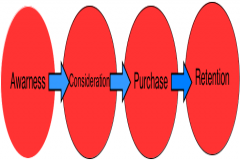One of the most effective methods of increasing business opportunities is to be recognized as an authority in your field.

This is typically a gradual process and absolutely must be a subtle one. By that, I mean that the perception of you and your business or brand as the go-to forreliable information must be the customer’s idea… always implicit, never suggested. Trust is an essential element of being seen as an authority, and as such, must be granted by your customers voluntarily. Pushing nearly always breeds resistance.
There are several ways in which you can foster that trust:[list type=”bullet1″]
- Share recent and upcoming news that is relevant to your field;
- Offer clear, unbiased interpretations of concerns to customers of your product or service;
- Provide valuable advice to help customers realize benefits in cost, efficiency and utility of your product or service;
- Always be accessible and approachable;
- Accept and deal with negativity, admitting and rectifying your errors immediately and fairly.
[/list]
Sharing
You should be helping yourself stay abreast of developments that can affect you and your customers, and sharing that knowledge will demonstrate to them that you’re an up-to-date source of information. Don’t look at this as an opportunity to plug your business for potential sales – it should be strictly informative.
New regulations that affect the use of your product, technological innovations that can increase the cost-effectiveness or efficiency of its use, even viable alternatives, citing unbiased pros and cons, can all contribute to your image as a reliable, objective source.
Interpretations
Many potential customers may be confused or uncertain of the considerations surrounding the use of your product. Providing them with an easily understood interpretation of how any legal, safety, health or cost concerns could affect their decision can be very constructive. Again, unbiased and honest is key here, in order to establish trust of your brand.
Unbiased comparisons to competitive products can be extremely helpful, when your product is honestly and verifiably superior in some regard.
Advising
Offering potential customers sound advice that increases value for them is always a good way to nurture trust and appreciation. While this can sometimes result in an up-sell, it shouldn’t be seen as a sales opportunity. Rather, it’s an opportunity to build a relationship. The trust you gain here may result in a sale now, a referral or a second sale later, but regardless, it can yield great benefits in establishing your business as one the customer will want to do business with and recommend to others.
Being accessible
Prospective and existing customers should always feel confident that they can approach you with doubts, complaints or questions and get fair and honest treatment. The best way to foster such confidence is for them to see you treat others the way they hope to be treated.
Prompt responses, meeting or exceeding the issue addressed, and never brushing off a concern as unfounded or illegitimate, is always the best approach. Remember, too, that even when they see others’ questions answered, there will always be some that are hesitant to speak up. Don’t wait for them – invite them to comment!
An approach I’ve seen used with great success is to simply ask your customers, “If you ran our company, what is the first thing you would want to change?” You might be surprised at the responses, and may even learn of a negative perception of your business that you’re unaware of.
Accepting
Every business makes mistakes now and then, and consumers are smart enough to realize that, even though they may not like it. Most, however, will forgive mistakes when they see the business go to great lengths to “make things right”.
Such mishaps can actually be turned to your advantage, when handled correctly. Don’t be satisfied to simply replace the customer’s losses… go the extra mile. For instance, if you ship an order too late for a recipient’s birthday party , and the irate customer wants his money back. Don’t just refund the purchase price – refund his money immediately and cheerfully, admitting that the error was entirely yours. Apologize for the inconvenience and disappointment and give him a $50 gift certificate or a free gift, by way of making amends.
I’ve even seen one instance in which the customer was so angry that he publicly said that he was going to get a replacement from the business’ main competitor. The business sent him a gift certificate in the amount of the cancelled order, redeemable with the competitor, AND refunded his money. The belated effort to satisfy the customer may not have salvaged that order but the impression it made on others that saw the discussion on the company’s Facebook page paid for the investment several times over.
At the End of the Day
Measuring your success is often the most difficult task, at least until you’ve achieved a high level of success. It’s often what’s called a “gut-call”. Once you’re there, it’s generally fairly obvious, but on the way, it can be more vague. The best method I’ve found is to engage with your customers (the example cited above in #4, or variations) and get their feedback.
I’ve seen several businesses that followed the basic philosophy outlined above that achieved noteworthy results, both in the service industry and in ecommerce. With business being conducted increasingly online, where we don’t have the benefit of face-to-face contact, we need to find new ways to fill that gap. It’s not really more difficult… it’s just different.
Basically, most people just want to be treated fairly and honestly – the businesses that consistently fulfill that desire will stand out from their competition.



